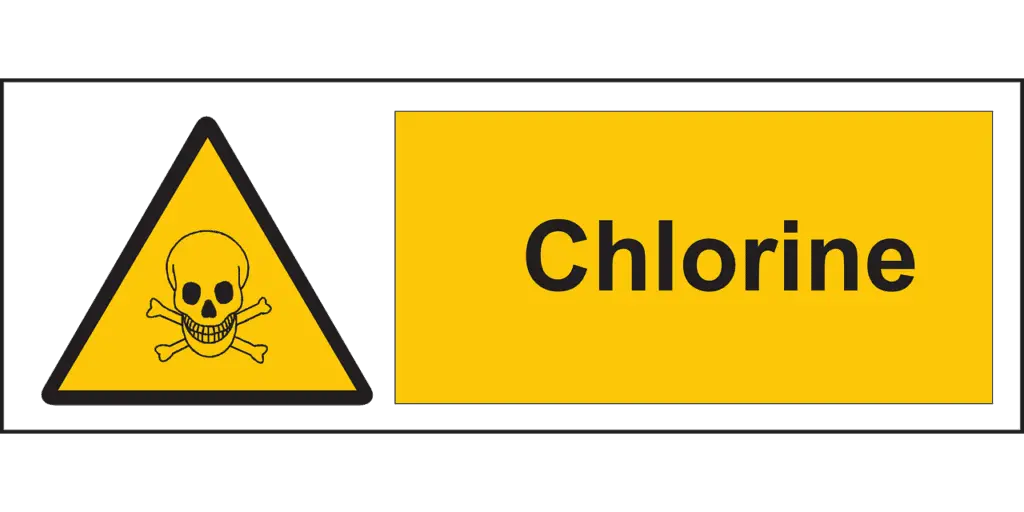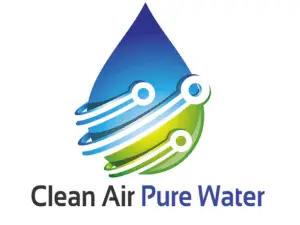Water departments in many municipalities use chlorine or a combination of chlorine and ammonia (chloramine) to disinfect water because they are a cheap and effective way of killing bacteria and other pathogens that cause diseases such as protozoans and viruses, including COVID-19. Some people prefer to remove chlorine from their water before they drink or before using it in aquariums due to its toxicity to fish. Will boiling the water do achieve this?
Boiling water will remove free chlorine. However, chlorine combined with other chemicals such as ammonia won’t be removed by boiling alone, but doing so can reduce the concentration. Chlorine combined with other chemicals is removed by other processes.
The following paragraphs will define chlorine and distinguish between free chlorine and total chlorine and chlorine and chloramine. Other ways to effectively reduce or remove chlorine and chloramine from water and the need to do so will be discussed. Finally, beliefs about effective ways to remove chlorine are scrutinized.
What Is Chlorine?
Chlorine is a chemical element belonging to a group called halogens. When chlorine reacts with sodium, table salt is produced.
According to the Centers for Disease Control and Prevention (DDC), chlorination, “the process of adding chlorine to drinking water” as a means of disinfecting, can be done in different ways. Use chlorine as a “compressed elemental gas, sodium hypochlorite solution (NaOCl) or solid calcium hypochlorite (Ca(OCl).”
Most municipalities add the chlorine as a gas, adds chemist Robert L. Wolke. However, when any of chlorine’s forms are mixed with water, hypochlorous acid (HOCl) is produced, and this is what does the disinfecting.
At high concentrations, chlorine “is a choking, toxic gas that would burn your lungs and kill you in fairly short order, if you were unable to get away” says chemist Theodore Gray, while the CDC claims it “could be harmful in high doses,” but not when it’s mixed in drinking water.
What Is the Difference Between Free Chlorine and Total Chlorine?
The CDC explains that when chlorine, in any form, is added to the water, the amount added is not immediately going about its main job of disinfecting.
First, some of it is reacting with stuff in the water known as the chlorine demand of the water, such as organic materials (leaves, sticks, etc.) and metals. What’s left is called total chlorine. Part of that is also useless for disinfecting because it has reacted with nitrates, leaving only a fraction of the amount initially added that is useful for disinfecting called free chlorine.
Basically, enough chlorine is added to the water being treated to ensure that there is enough free chlorine to disinfect the water, making it safe to drink when it reaches your tap.
So, if you want to remove chlorine from facility-treated water, you will be looking to remove the total chlorine, the free chlorine part of which can be reduced significantly by boiling the water, according to City of Greensboro, North Carolina’s water department staff.
What Are Chloramines?
Chloramines, or secondary disinfectants, are usually created when water facilities add ammonia to the chlorinated water being treated for drinking, bathing, cooking, etc. Wolke says that about a third of U.S. cities are now using chloramines for water disinfecting.
Greensboro’s water department lab explains that chloramines are preferred. They produce less bad odor, taste, and fewer disinfecting by-products (DBPs), such as carcinogenic trihalomethanes, than free chlorine. However, they are not as potent as a disinfectant as chlorine.
The EPA notes that, compared to chlorine, “Chloramines provide longer-lasting disinfection as the water moves through pipes to consumers.”
However, chloramines are not easily removed from water by boiling. Wolke cites a study done by Gary Burlingame and Alexis Tanjutco of the Philadelphia Water Department that found even five minutes of boiling removed no more than half of the chloramines in the water.
Is There Any Need to Remove Chlorine or Chloramines From Water?
Because chlorine and chloramines would go directly into a patient’s bloodstream if they remained in water used for dialysis treatment, these chemicals must be removed from this water and also water used for aquariums because of their toxicity to fish.

According to the EPA, they must also be removed or deactivated in disinfected wastewater before being released into the environment. A very careful dosage of sulfur dioxide is used to dechlorinate wastewater. In contrast, water used in dialysis can be treated with reverse osmosis or a newer system called the NX System Pure Flow.
Other people, those who are chemically sensitive or simply don’t want to consume any unnecessary toxins, at any level, prefer or may need chlorine-free water, despite CDC’s claims of disinfected water safety.
Will Boiling or Setting Out Water in Containers Overnight Sufficiently Reduce the Chlorine Levels?
First, information circulating that claims chlorine will disappear from treated water by allowing it to sit overnight in an open container is not reliable. Other sources claim chlorine can be removed by repeatedly transferring water from one clean container to another several times.
Chemist Robert Wolke doesn’t buy these claims. Although he does agree that some of the chlorine gas will escape from the surface if chlorinated water is “left sitting around.” Doing so mainly appears to remove the smell, so you think it’s all gone.
He also explains that the rate of dissipation is influenced by several factors like the temperature of the water, size of the container, acidity or PH of the water, and level of chlorine to start with, noting that municipalities can send varying levels to customers.
Even though several sources claim boiling disinfected water will remove chlorine, the EPA and CDC don’t want to confirm this as fact, even if it is true. However, the EPA does admit that cryptosporidium in drinking water, which chlorine cannot destroy, could make some people seriously ill or die, adding that boiling the water will kill that potentially dangerous parasite.
Best Ways to Remove or Reduce Chlorines and Chloramines From Water
Reverse osmosis appears to be the best currently available way to purify water. These systems can be added as whole-house or kitchen tap water filtration units. According to the EPA’s publication, “Filtration Facts,” reverse osmosis is “effective in eliminating all disease-causing organisms and most chemical contaminants.”
EPA also recommends using point-of-use devices such as free-standing pitchers that employ carbon-activated filters to reduce water contaminants. Brita claims to reduce the Chlorine in tap water from about 95% to 97%, depending on which filter is used, Standard or Longlast, respectively.
Although the website doesn’t tell you that these Brita filters do not completely remove the chlorine, a phone call to the company will clarify the percentage of reduction (1-800-24-BRITA).
Final Thoughts
If you need to be certain that the water you drink or use is chlorine and chloramine-free and free of other contaminants, have the water treated with reverse osmosis (RO).
One of the best-rated RO systems sold on Amazon is this APEC Certified Ultra Safe Reverse Osmosis Drinking Water Filter System.
You may also find some local businesses that sell RO-treated water by the gallon, and that it’s more affordable than bottled water.
Note that the CDC’s claims about the safety of facility-treated water aren’t accurate for everyone, as the EPA’s “Filtration Facts” confirms, admitting that some people may need extra water treatment at home. EPA also recommends that you do some research before buying a home treatment system to make sure it’s certified and one that will meet your specific needs.
Sources
- EPA: Is Drinking Tap Water Safe?
- EPA: Chloramines in Drinking Water
- Sensorex: Free Chlorine vs Total Chlorine: What’s the Difference?
- Support HACH: What Is the Difference Between Free Chlorine and Total Chlorine?
- CDC: Chlorine Residual Testing
- Brita: Get More Out of Your Water with Brita
- Washington Post: Chlorine Confusion
- Wikipedia: Robert L. Wolke
- Wikipedia: Halogen
- CDC: Disinfection with Chlorine
- Theodore Gray: Periodic Table Elements
- Wikipedia: Theodore Gray
- EPA: Wastewater Technology Fact Sheet: Dechlorination
- Davita Kidney Care: Home Hemodialysis and Water Treatment
- Wikipedia: Reverse Osmosis
- EPA: Water Health Series: Filtration Facts
- EPA: Disinfection By-Products: A Reference Resource
- Brita: What We Filter

